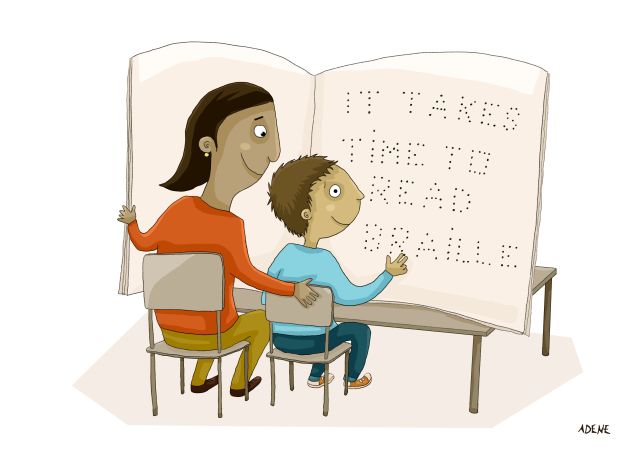GEM REPORT
Tomorrow, the GEM Report, the Teachers Task Force at UNESCO and Education International are co-hosting an event on teachers and teaching for inclusion. Inclusion cannot be realized unless teachers are agents of change, with values, knowledge and attitudes that permit every student to succeed. Below are some of the core points to have come out of the 2020 GEM Report on teaching for inclusion that will be the focus of the event.
Inclusive teaching adapts to student strengths and needs. It requires teachers to be able to recognise the experiences and abilities of every student and to be open to diversity. They need to be aware that all students learn by connecting classroom with life experiences, and thus embed new ideas and skills in problem-solving activities. While many teacher education and professional learning opportunities are designed accordingly, entrenched views of some students as deficient, unable to learn or incapable mean that teachers sometimes struggle to see that each student’s learning capacity is open-ended.
Teachers may simply not believe that inclusion is possible and desirable. Teachers’ attitudes often mix commitment to the principle of inclusion with doubts about their preparedness and the readiness of the education system is to support them. In Lebanon, teachers did not believe all students with disabilities could be successfully included, for example. In 43 mostly upper middle and high income countries, one in three teachers reported that they did not adjust their teaching to students’ cultural diversity.
Part of this may be down to the fact that teachers may not be immune to social biases and stereotypes. In the United States, for instance, 31% believed inequality was mainly due to African Americans lacking motivation. Similarly, in São Paulo, Brazil, grade 8 mathematics teachers were more likely to give white students a passing grade than their equally proficient and well-behaved black classmates. In Italy, girls assigned to teachers with implicit gender bias underperformed in mathematics and chose less demanding schools. Such biases are detrimental to student learning and require training to confront and discuss them out in the open.
Ensuring that teachers rise to the challenge requires training. But analysis of information collected for the GEM Report’s new website, PEER, determined that out of 168 countries analysed, 61% provided elements of training on inclusion. Around a quarter of teachers in middle- and high-income countries reported a high need for professional development on teaching students with special needs. These are calls for this situation to change.

But such training should not be taught as a specialist topic; it should be the core of teacher education. A good example can be found in New Brunswick, Canada, where a quarter of all teachers were trained to support students with autism. Nor should mainstream and special school teachers be trained separately.
Training should also be targeted at head teachers and school leaders. They should be ready to implement activities that create safe and inclusive school environments. The 2018 OECD Teaching and Learning International Survey (TALIS), showed nearly one-fifth of head teachers had no instructional leadership training. Across 47 participating education systems, 15% of head teachers reported a high need for professional development in promoting equity and diversity, with the share reaching more than 60% in Viet Nam.
An inclusive school ethos is key to making all students feel they belong and can realize their potential. Head teachers need support to combat bullying and school violence, for instance, which constitute one of the most important drivers of exclusion.
As well as training, policy makers should make sure that the teaching body should reflect social diversity. Under-representation of minorities is fuelled by barriers at each step, from entering initial teacher education to remaining in the profession. In India, for example, the share of teachers from scheduled castes did increase from 9% to 13% between 2005 and 2013 but is still unrepresentative given that they constitute 16% of the country’s population.
All this said, teachers cannot carve out a path to inclusion on their own. They also require support, appropriate working conditions and autonomy in the classroom to focus on every learner’s success. Support personnel accompany a transition towards inclusion, but a survey of unions suggested they were always available in no more than 22% of countries. Policies designed to provide incentives for teachers to work in more challenging schools are needed. In Queensland, Australia, teachers willing to work in rural and remote areas may be entitled to rent subsidies and financial benefits.
Inclusion in education involves us all, policy makers, the education workforce, but also communities and parents whose positive attitudes are needed. We cover all these issues in the 2020 GEM Report and look forward to discussing them on this blog in the coming weeks.
Fuente: https://gemreportunesco.wordpress.com/2020/07/08/all-teachers-should-be-prepared-to-teach-all-students/







 Users Today : 37
Users Today : 37 Total Users : 35460340
Total Users : 35460340 Views Today : 54
Views Today : 54 Total views : 3419082
Total views : 3419082